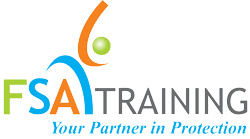 When you read or hear about an outbreak of a foodborne illness at a restaurant or public event, understand that it probably could have been prevented. Someone didn’t follow an accepted practice or procedure, and people became ill.
When you read or hear about an outbreak of a foodborne illness at a restaurant or public event, understand that it probably could have been prevented. Someone didn’t follow an accepted practice or procedure, and people became ill.
A great number of Florida professionals have been trained by FSA Training (fsatraining.com), based on the National Restaurant Association’s acclaimed food safety program, ServSafe.
But we can all remember the 4 food safety tips that Mom repeated to us over and over:
- Hot food is served HOT
- Cold food is served COLD
- If it fell on the floor, don’t eat it
- Wash your hands after using the restroom
That’s great advice for kids, yet the foodservice professional needs to know more.
Hot food is served HOT
Depending on the type of food, hot food needs to be cooked to the proper temperature to be safe for service.
- Poultry and stuffed foods, 165ºF, 74C
- Ground meat or seafood, 155ºF, 68ºC
- Seafood and steaks and chops, 145ºF, 63ºC
- Pork, beef, veal and lamb roasts, 145ºF, 63ºC. (Roasts can be safe at cooking temperatures as low as 130ºF, 54ºC, if held at that temperature for about 2 hours before serving.)
- Some people like seafood and meats cooked to lower temperatures than these. Chefs know that, and it’s a relatively safe practice. If that’s you… KNOW THE SOURCE!
- Once cooked to these temperatures, hot food being held for service, as on a buffet, must be held at 135ºF, 57ºC or higher.
Cold food is served COLD
Generally, this means at or below 41ºF, 5ºC. There are a few exceptions, but you should follow this rule; err on the side of caution.
SIDE NOTE, WE’LL GET BACK TO MOM IN A MINUTE
The range of temperatures between 41ºF and 135ºC is referred to as the “temperature danger zone.” Obviously, you don’t prepare meals inside the refrigerator, so your food will achieve temperatures above 41ºF at times, prior to cooking.
Just be sure to limit the time in the TDZ. Work in small batches, work quickly, return food back to the fridge once prepped if not being cooked immediately, etc.
If it fell on the floor, don’t eat it
A University studied the “5 second rule” a few years ago, and yeah, it’s true. But YUCH! throw that food away. The rule that was violated here is known as “cross contact.” That’s when food has been exposed to a contaminant through an unsafe practice, which can include dropping it on the floor, cutting it with an unsanitary knife, working on an unsanitary surface, unclean hands, unsanitary wiping towels, sneezing, etc.
Wash your hands after using the restroom
Great advice. In the food safety world, we expand this rule to mean ALL THINGS personal hygiene. Clean people, clean hands, clean clothes, etc.
That’s it in a nutshell, thanks MOM!
Keep in mind that these practices must follow the food all the way from its source to your table. Just remain mindful, and careful.
This is just a guide, as there’s so much more to learn from the ServSafe® Food Protection Manager course. If you are a foodservice professional, find training resources at FSATraining.com, or call our office at 888-372-3232 to discuss private training for your staff.
